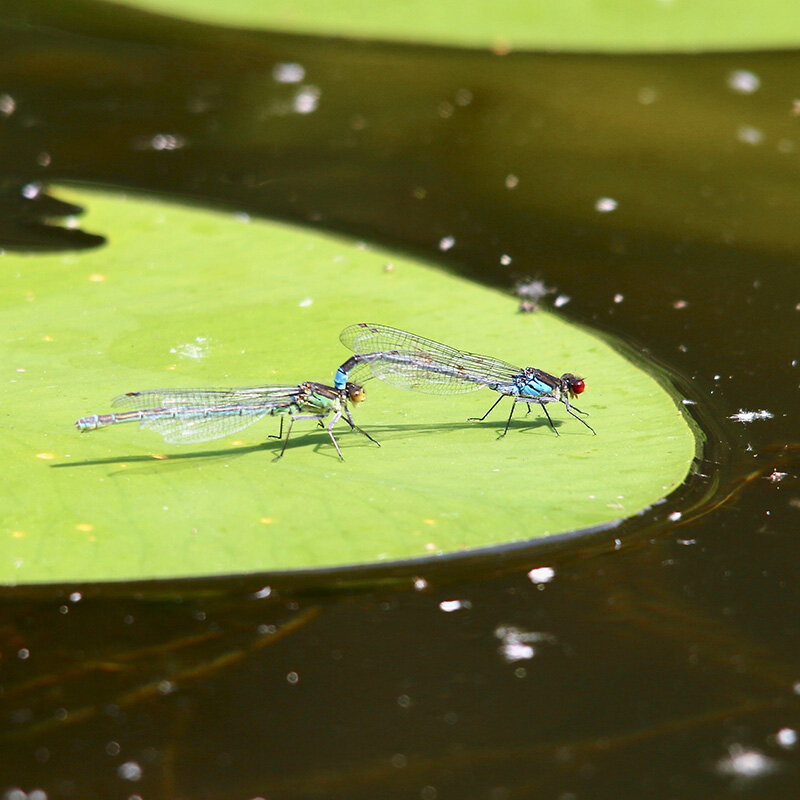Red-eyed damselfly
Erythromma najas
The male red-eyed damselfly is largely black in colour, but has striking burgundy-red eyes and blue bands at the top and end of the abdomen (segments 1 and 9 & 10). They have black legs and clear wings with a pale brown pterostigma (wing spot). These damselflies measure around 30-36mm in length.
The female is also largely black, has brown-red eyes, and green coloration on the sides of the thorax. They have short or incomplete yellow antehumeral (shoulder) stripes on the back of the thorax, and their pronotum (plate-like structure that covers part of the thorax) is tri-lobed.
Damselfly larvae are fully aquatic and have external gills called caudal lamellae which are large fin-like appendages located at the end of the abdomen. Red-eyed damselfly larvae measure around 29-32mm in length and have three caudal lamellae which measure 8-9mm, are rounded and have three darker bands towards the end. The labium or extendable hinged jaw is long and narrow in this species.
What they eat
The adults eat small insects such as flies and mosquitoes; whilst the larvae hunt other invertebrate larvae, crustaceans, worms, snails, and tadpoles.
Where and when to see them
They inhabit slow-moving water bodies such as canals, ponds, lakes and slow-flowing rivers. Look out for them resting on floating vegetation. They are locally common in southern England and Wales.
They can be seen flying April through to September.
Look out for their exuviae, their larval skin cast. When the larvae of damselflies are ready to turn into adults, they emerge from the water and moult their skins which can often be found on rocks and emergent vegetation surrounding the waterbodies.
!Take care near waterbodies!
View a Red-eyed damselfly 10km distribution map of Wales
Legal status
None.
Similar species
Did you know?
Damselflies rest with their wings closed along their abdomens whereas dragonflies rest with their wings at 90 degrees (like an aeroplane). Damselfly wings are both the same size and shape and taper where they attach to the body, whereas dragonflies have different shaped fore and hind wings. Damselflies have smaller eyes that do not meet in the middle, and they tend to have a longer and thinner body.



